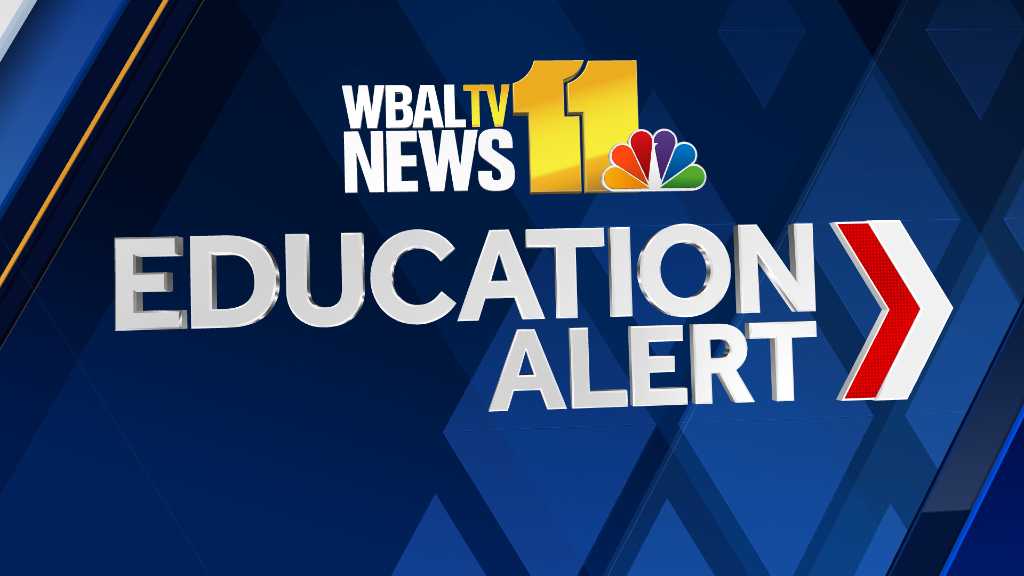As more students return to school buildings, a number of Maryland school districts are dealing with technology trouble, and families and school districts are frustrated.Reliable technology was a problem for some school systems before the coronavirus pandemic and now with so many students online, it’s become even more of a challenge.A tweet went out a few days ago from Baltimore County’s Department of Information Technology, warning about problems affecting web and email traffic.“These are basic minor hardware issues that have been resolved relatively quickly and we know it’s a little bit of a problem when people see their internet slow down a little bit but it’s to be expected, especially with a system as large as Baltimore County Public Schools,” Charlie Herndon, of Baltimore County Public Schools.But there continues to be technology concerns at schools. The district said what’s taking place is not related to hybrid learning or last November’s ransomware attack.“There are going to be some slowdowns, occasionally, for routine maintance or for some issues that are even out of our control not connected to Baltimore County schools,” Herndon said.Baltimore City Schools have also had frequent technology issues, mainly with online interruptions and slower than usual internet speeds.The Governor’s Office of Rural Broadband said it’s aware of problems affecting students in urban communities and said it’s all due to a bandwidth shortage.“It’s often compared to a waterline. Obviously, if you have a 6-inch waterline, you get a lot more water flow than if you have a 2-inch waterline, well it’s the same with bandwidth, we call it the bigger pipe,” said Kendrick Gordon, of the Governor’s Office of Rural Broadband. The state has given more than $10 million to rural and urban school districts to help expand and improve bandwidth. Meantime, Howard County is appealing to its schools to have in-person students turn off their cameras, limit the use of instructional and personal multimedia and limit the use of non-instructional sites and applications.To see how the state is trying to address these technology concerns, check out a new report here.
As more students return to school buildings, a number of Maryland school districts are dealing with technology trouble, and families and school districts are frustrated.
Reliable technology was a problem for some school systems before the coronavirus pandemic and now with so many students online, it’s become even more of a challenge.
A tweet went out a few days ago from Baltimore County’s Department of Information Technology, warning about problems affecting web and email traffic.
“These are basic minor hardware issues that have been resolved relatively quickly and we know it’s a little bit of a problem when people see their internet slow down a little bit but it’s to be expected, especially with a system as large as Baltimore County Public Schools,” Charlie Herndon, of Baltimore County Public Schools.
But there continues to be technology concerns at schools. The district said what’s taking place is not related to hybrid learning or last November’s ransomware attack.
“There are going to be some slowdowns, occasionally, for routine maintance or for some issues that are even out of our control not connected to Baltimore County schools,” Herndon said.
Baltimore City Schools have also had frequent technology issues, mainly with online interruptions and slower than usual internet speeds.
The Governor’s Office of Rural Broadband said it’s aware of problems affecting students in urban communities and said it’s all due to a bandwidth shortage.
“It’s often compared to a waterline. Obviously, if you have a 6-inch waterline, you get a lot more water flow than if you have a 2-inch waterline, well it’s the same with bandwidth, we call it the bigger pipe,” said Kendrick Gordon, of the Governor’s Office of Rural Broadband.
The state has given more than $10 million to rural and urban school districts to help expand and improve bandwidth.
Meantime, Howard County is appealing to its schools to have in-person students turn off their cameras, limit the use of instructional and personal multimedia and limit the use of non-instructional sites and applications.
To see how the state is trying to address these technology concerns, check out a new report here.

















